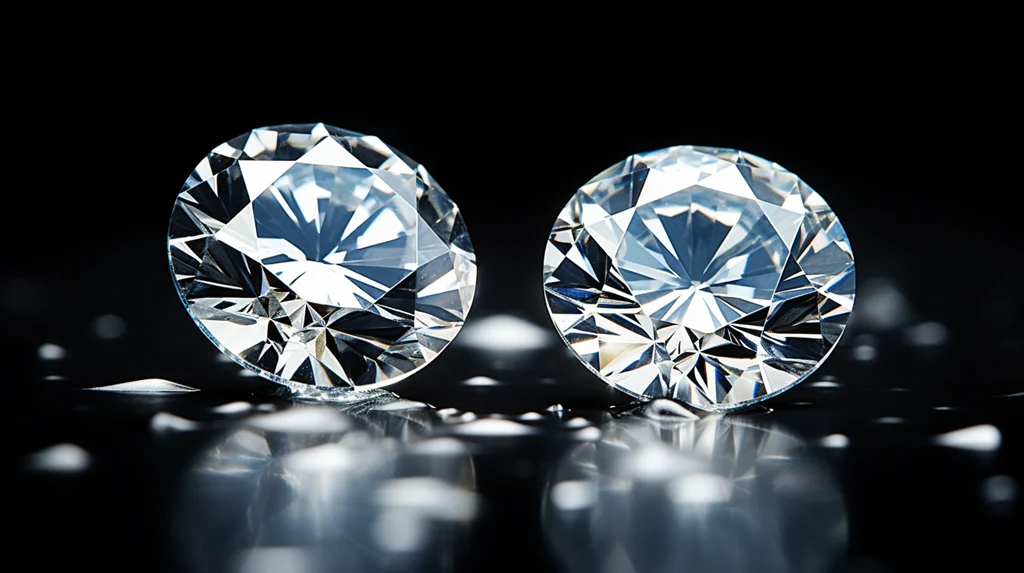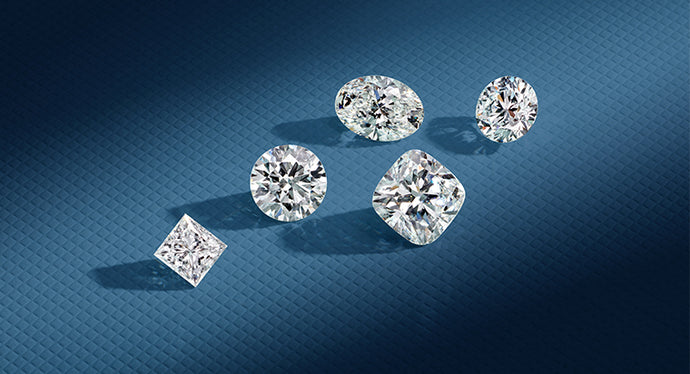Introduction
In recent years, lab diamonds have captured the imagination of both consumers and jewelers alike. These diamonds, created through technological processes rather than geological formations, are sparking a new era in the diamond industry. Unlike natural diamonds formed deep within the Earth’s mantle over millions of years, lab diamonds are cultivated in controlled environments using advanced scientific methods. This not only ensures their quality but also minimizes the environmental and ethical concerns associated with traditional diamond mining.
Understanding Lab Diamonds
Definition and Composition
Lab diamonds, also known as synthetic diamonds or cultured diamonds, share the same chemical composition as natural diamonds—pure carbon atoms arranged in a crystalline structure. The key difference lies in their origin lab diamonds are the future: while natural diamonds are mined from the Earth, lab diamonds are grown in laboratories using high-pressure, high-temperature (HPHT) or chemical vapor deposition (CVD) processes. These methods replicate the natural diamond-growing process under controlled conditions, resulting in diamonds that are optically, physically, and chemically identical to mined diamonds.
How Lab Diamonds Are Created
The process of creating lab diamonds begins with a tiny diamond seed, which is placed in a chamber where carbon atoms are introduced and deposited onto the seed using either HPHT or CVD techniques. Over time, layer by layer, the diamond crystal grows, mimicking the natural growth process. This meticulous cultivation ensures that lab diamonds exhibit the same brilliance, clarity, and durability as their natural counterparts, making them a desirable choice for discerning consumers.
Quality and Durability
Comparison with Natural Diamonds
In terms of quality and durability, lab-grown diamonds are on par with natural diamonds. Both types exhibit the same hardness on the Mohs scale and possess identical optical properties, including brilliance, fire, and sparkle. Lab diamonds also undergo rigorous grading and certification processes by reputable gemological laboratories, such as the Gemological Institute of America (GIA) or the International Gemological Institute (IGI), ensuring that they meet the highest standards of quality and authenticity.
Certifications and Standards
To differentiate lab diamonds from natural ones, independent grading reports are essential. These reports detail the diamond’s characteristics, including its cut, color, clarity, and carat weight. Certifications provide consumers with confidence and assurance that they are purchasing a genuine lab-grown diamond that meets industry standards. As awareness grows, so too does the demand for certified lab diamonds in the jewelry market.
Cost Effectiveness
Price Comparison
One of the most compelling reasons to choose lab-grown diamonds is their affordability compared to natural diamonds. On average, lab diamonds are priced at 20-40% less than mined diamonds of similar quality. This price differential enables consumers to purchase larger or higher-quality diamonds within their budget, making luxury more accessible without compromising on aesthetics or brilliance.
Affordability for Consumers
For budget-conscious consumers, lab-grown diamonds offer a cost-effective solution without sacrificing beauty or value. Whether purchasing an engagement ring, earrings, or a necklace, opting for a lab-created diamond allows individuals to celebrate special occasions with a symbol of enduring beauty and craftsmanship. As affordability becomes a driving factor in purchasing decisions, the market for lab diamonds continues to expand, catering to a diverse range of preferences and budgets.
Innovation in Cutting-edge Technology
Advancements in Diamond Synthesis
The technology behind lab diamond production continues to evolve, driven by scientific innovation and research. New techniques and methodologies enhance the efficiency and scalability of diamond synthesis, paving the way for larger, purer, and more precisely engineered diamonds. These advancements not only improve the quality and consistency of lab-grown diamonds but also support sustainable practices within the jewelry industry.
Man made diamonds, also known as lab-grown or synthetic diamonds, represent a revolutionary advancement in the world of gemology. These diamonds are created in highly controlled laboratory environments that replicate the natural conditions under which diamonds form in the Earth’s mantle.
Impact on the Jewelry Industry
The rise of lab diamonds is reshaping the jewelry industry’s landscape, challenging conventional norms and offering new possibilities for design and customization. Jewelers and designers are embracing lab-grown diamonds for their versatility and ethical appeal, creating exquisite pieces that appeal to modern consumers seeking both beauty and sustainability. As technology and consumer preferences evolve, lab diamonds are poised to play a pivotal role in the future of fine jewelry.
Market Trends and Consumer Preference
Shift Towards Lab-Grown Diamonds
In recent years, there has been a notable shift in consumer preference towards lab-grown diamonds. This trend is driven by growing awareness of environmental and ethical issues associated with diamond mining, as well as the desire for transparent and sustainable purchasing choices. Millennials and Generation Z, in particular, are leading the charge in embracing lab-grown diamonds, drawn to their ethical credentials and modern sensibility.
Consumer Awareness and Education
Educating consumers about the benefits and characteristics of lab-grown diamonds is crucial to fostering trust and acceptance within the market. Industry initiatives, such as informational campaigns and certification programs, play a pivotal role in raising awareness and dispelling myths surrounding lab-grown diamonds. By empowering consumers with knowledge, jewelers can cater to a discerning audience that values sustainability, innovation, and ethical integrity in their purchasing decisions.
Myths and Misconceptions
Debunking Common Myths
Despite their rising popularity, lab-grown diamonds are often subject to misconceptions and misinformation. One common myth is that lab diamonds are inferior to natural diamonds in terms of quality or value. In reality, lab-grown diamonds possess the same chemical, optical, and physical properties as natural diamonds, offering consumers a comparable alternative without the ethical concerns associated with mining.
Clarifying Misconceptions About Lab Diamonds
Another misconception is that lab diamonds lack rarity or exclusivity compared to natural diamonds. While it’s true that lab-grown diamonds are more accessible in terms of supply, their rarity lies in their craftsmanship and scientific precision. Each lab-grown diamond is a testament to human ingenuity and technological prowess, making it a unique and meaningful choice for jewelry enthusiasts worldwide.



